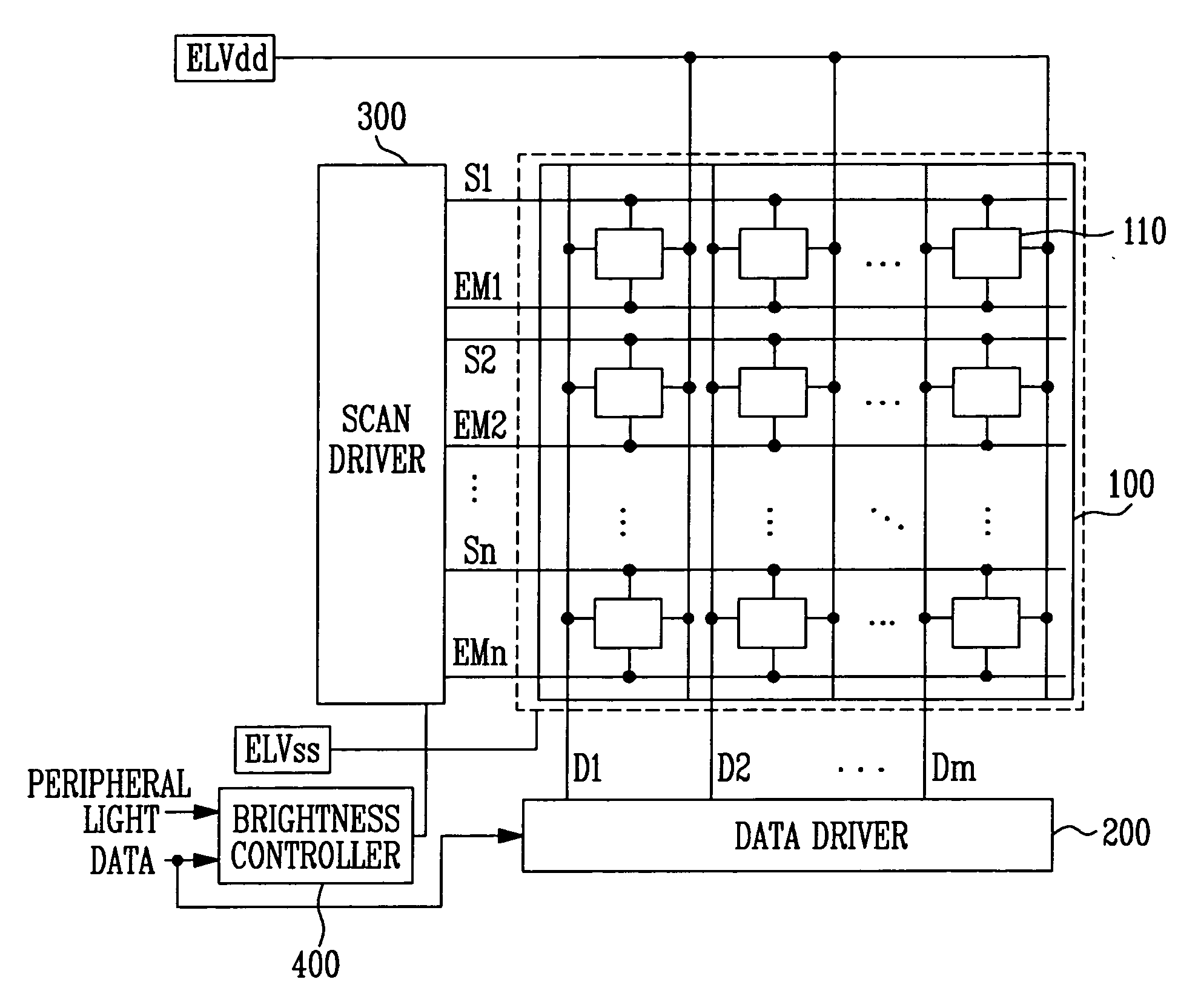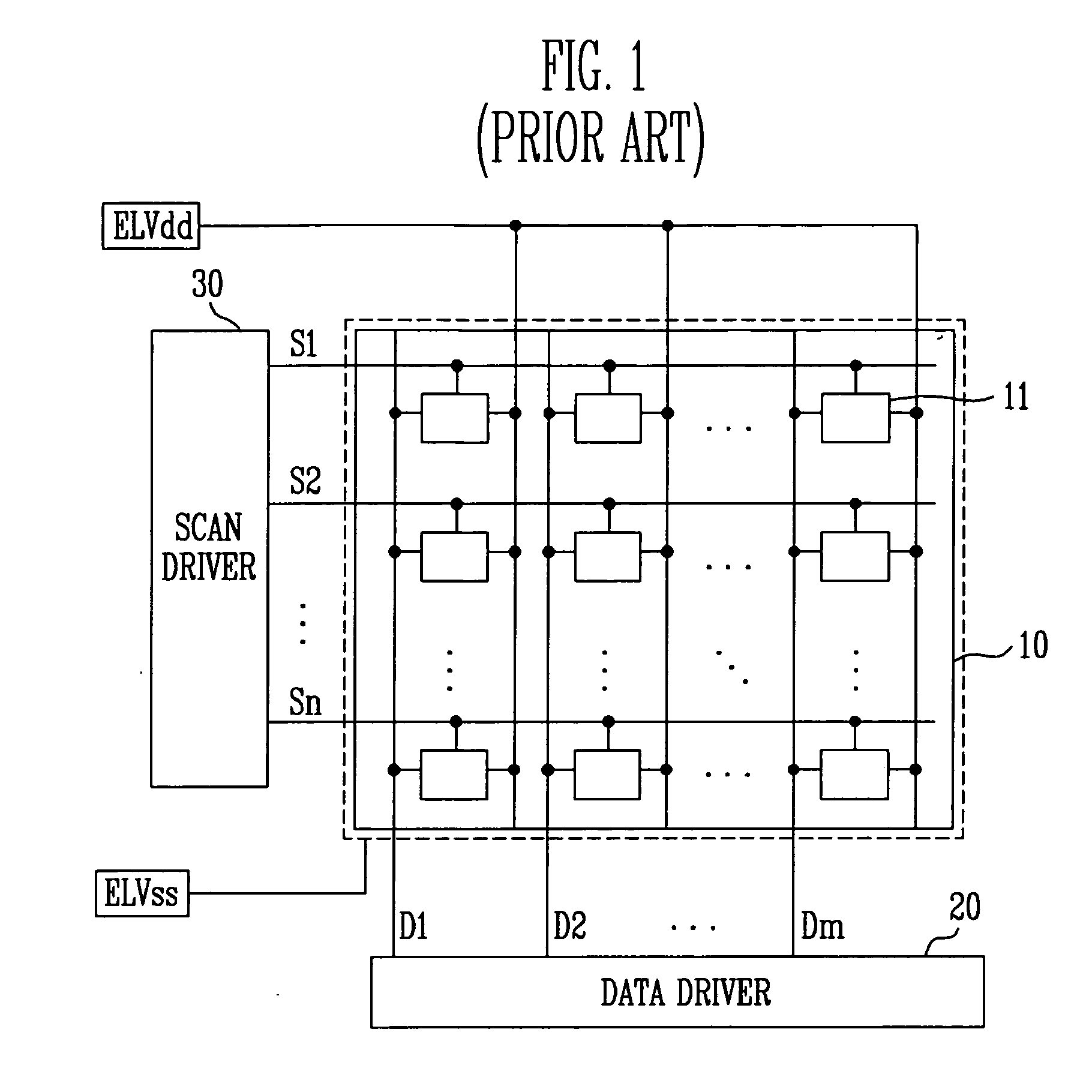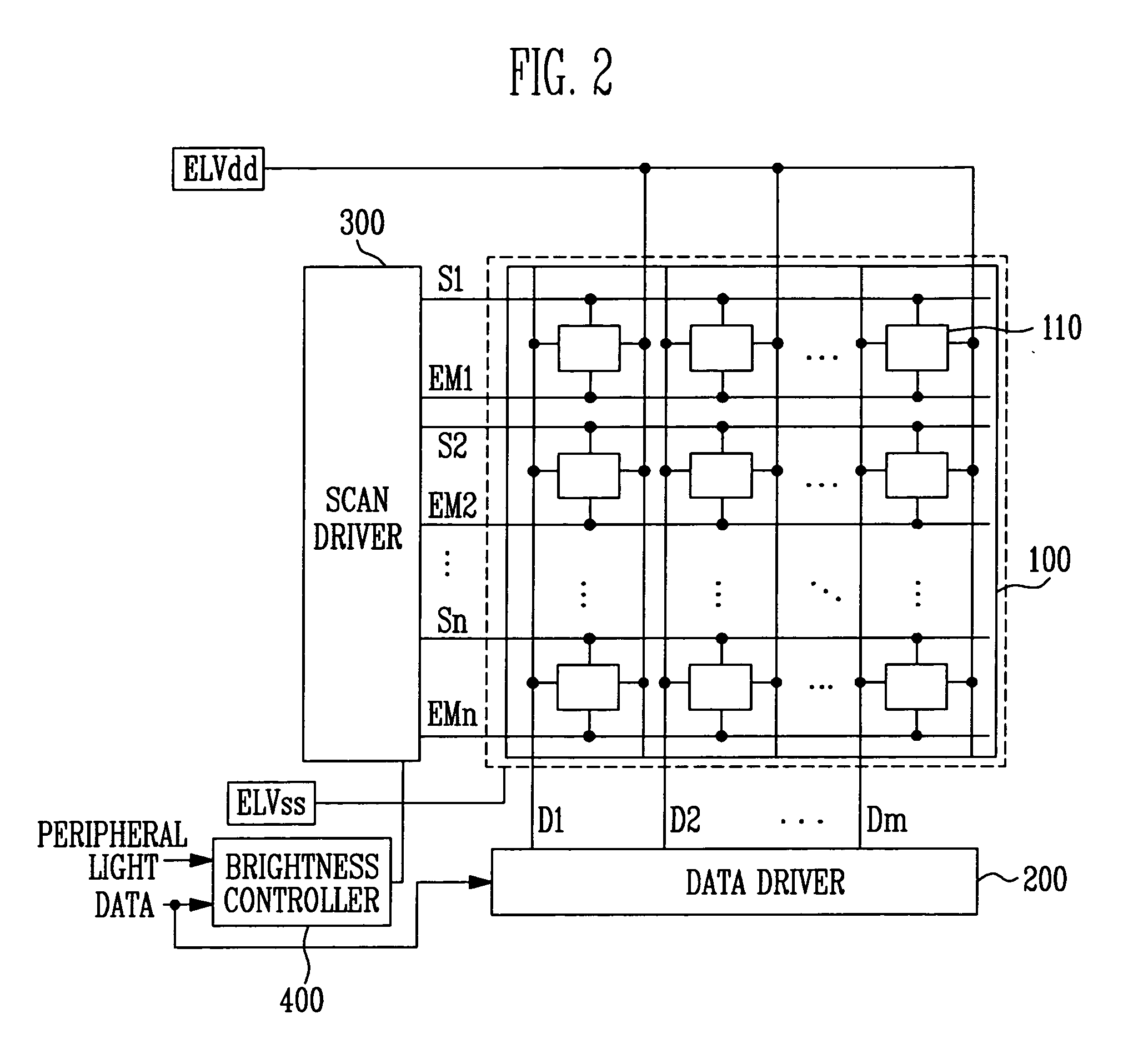Organic light emitting display and method of driving the same
a technology of light-emitting display and organic light-emitting display, which is applied in the direction of instruments, static indicating devices, cradles, etc., can solve the problems of increasing power consumption of organic light-emitting display, and achieve the reduction of peripheral light intensities, brightness of display regions, and brightness of display regions.
- Summary
- Abstract
- Description
- Claims
- Application Information
AI Technical Summary
Benefits of technology
Problems solved by technology
Method used
Image
Examples
first embodiment
[0063]FIG. 7A illustrates the second look up table illustrated in FIG. 5. In one embodiment, the contents stored in the second look up table 423 may vary in accordance with the resolution and size of the display region 100.
[0064] Referring to FIG. 7A, the second look up table 423 stores the change values Wd corresponding to the mode values received from the second controller 422. Here, the change values Wd are obtained by expressing the widths of the emission control signals EMI that are to be reduced as values corresponding to the periods of the horizontal synchronizing signal Hsync. When the mode values are small (that is, when the intensities of the peripheral light are small), the change values Wd are set to be large. When the mode values are large (that is, when the intensities of the peripheral light are large), the change values Wd are set to be small. When the mode values are at least one value including the maximum value, the change value Wd is set as 0 so that the brightne...
second embodiment
[0070]FIG. 8A illustrates the second look up table illustrated in FIG. 5. At this time, the contents stored in the second look up table 423 may vary in accordance with the resolution and size of the display region 100.
[0071] Referring to FIG. 8A, the second look up table 423 stores the change values Wd corresponding to the mode values received from the second controller 422. In this example, the change values Wd are obtained by expressing the widths of the emission control signals EMI to be changed in the ratio to the first widths EW1 of the emission control signal. Because the change values Wd are set to limit the brightness of the display region 100, the change values Wd are decimal values no more than 1. Because the second widths EW2 of the emission control signal generated by the second controller 422 are obtained by multiplying the first widths EW1 of the emission control signal by the change values Wd, the second widths EW2 of the emission control signal become smaller as the ...
PUM
 Login to View More
Login to View More Abstract
Description
Claims
Application Information
 Login to View More
Login to View More - R&D
- Intellectual Property
- Life Sciences
- Materials
- Tech Scout
- Unparalleled Data Quality
- Higher Quality Content
- 60% Fewer Hallucinations
Browse by: Latest US Patents, China's latest patents, Technical Efficacy Thesaurus, Application Domain, Technology Topic, Popular Technical Reports.
© 2025 PatSnap. All rights reserved.Legal|Privacy policy|Modern Slavery Act Transparency Statement|Sitemap|About US| Contact US: help@patsnap.com



